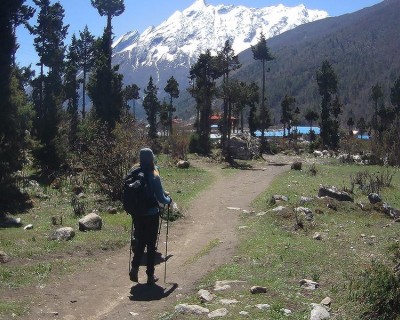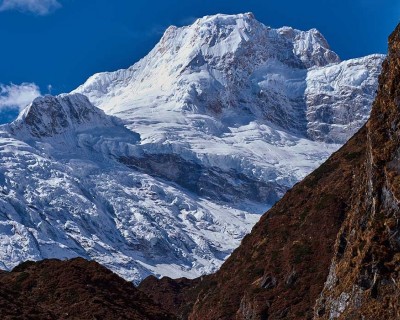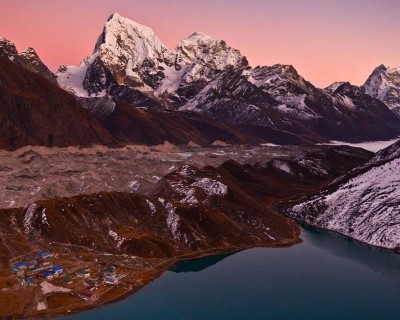Trekking Overview- Everest Base Camp Trek in Monsoon Season
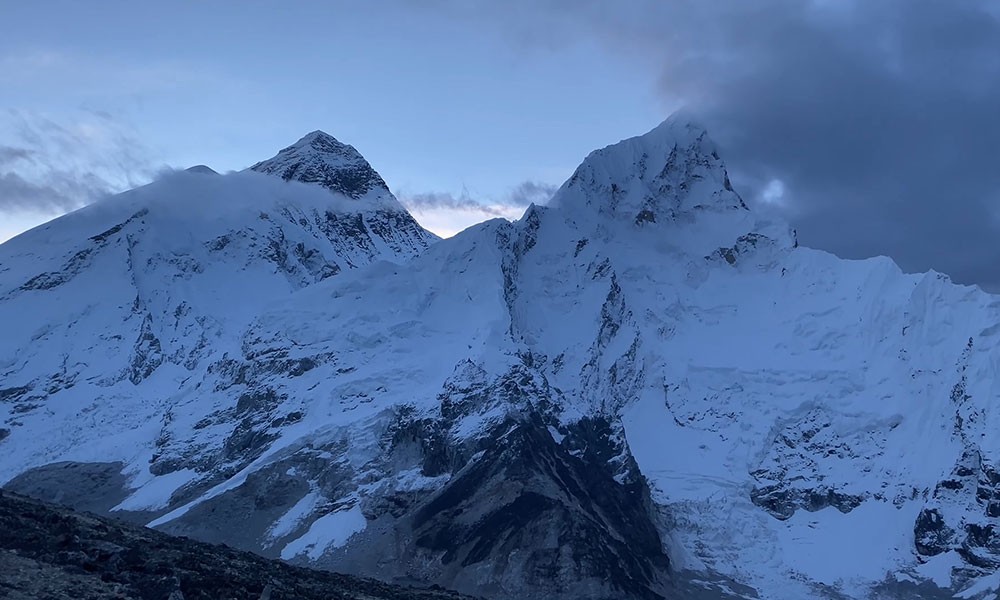
Depending on the nature of your trekking package, your Everest Base Camp Trek will either start directly with a flight from Kathmandu (1,400 meters) to Tenzing Hillary Airport in Lukla (2,800 meters) or after a sightseeing day in the Kathmandu Valley. If it is a fully guided trekking adventure, the agency will receive you at TIA and drop you back at the airport after the completion of the trek. However, the standard trekking packages like 12 Days Everest Base Camp Trek only take care of your trekking journey, you are free to spend your time as you wish after completion of the trek.
After landing at Lukla, you will begin your trekking after getting some rest, you will trek on the charming bank of the Dudh Koshi River to reach the first resting destination of your journey, Phakding Village (2,610 meters). Then, entering the Sagamatha National Park, your next day’s journey will lead you to the Sherpa Capital, Namche Bazaar (3,440 meters). This will also be your first acclimatization destination, and you will take you time to explore the popular highlights of this strategic acclimatization destination.
The next phase of your journey will take you across the spiritual hub of Tengboche Monastery (3,874 meters) to the summer valley of Dingboche (4,400 meters). You will enjoy another acclimatization day at Dingboche and hike to Nagarjun Hill (5,100 meters) on this day for effective acclimatization. Then, trekking past Lobuche (4,940 meters) and Gorakshep (5,180 meters), you will head toward the main objective of this Himalayan journey, Everest Base Camp (5,364 meters).
After exploring the base camp to your heart’s content, you will do an early morning hike to Kalapatthar (5,644 meters); from this vantage point, you can catch the panoramic views of the surrounding peak. Your hike to Kalapatthar will mark the closure of your iconic journey, and you will make your descent to Pheriche (4,200 meters). Then, gradually climbing down to Lukla across Namche bazaar, you will take a morning flight back to Kathmandu.
Get Insights On: Everest Base Camp Trek in March | Everest Base Camp Trek in August
Highlights of Everest Base Camp Trek in Monsoon Season
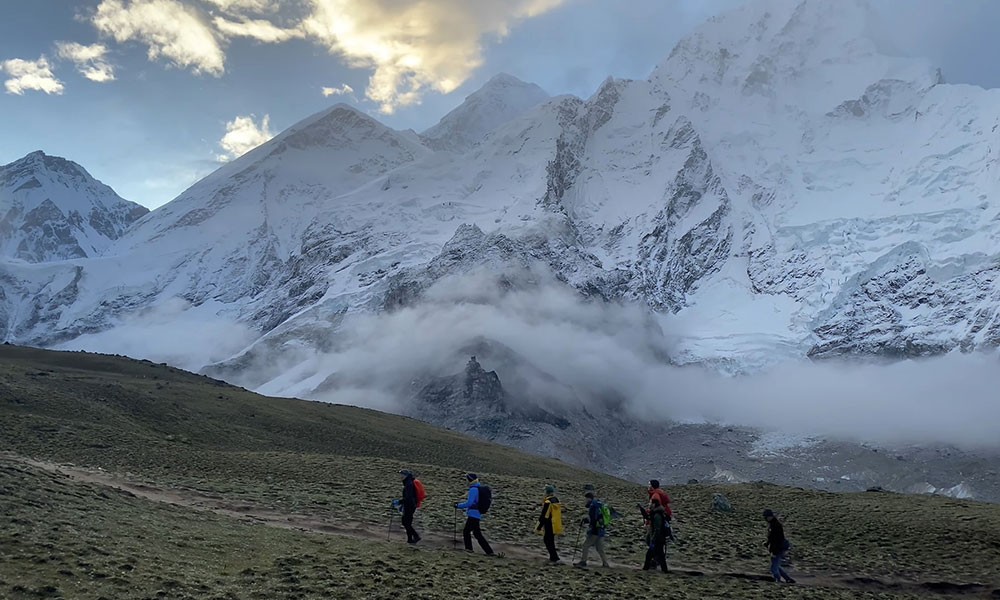
Lush Greenery Everywhere
Needless to say the landscapes of the country nourished by the monsoon rain is brimming with life and you will encounter lush greenery throughout every corner. The valley across the country, forest, and hillside are decorated with emeralds of green. Similarly, the dotted flowers along the trekking trail also make your journey more colorful.
Besides the incredible terrains covered with lush greenery, the perfectly terraced farm lands are another major highlight to look forward to during Everest Base Camp Trek in monsoon. As monsoon is the cultivating season, you will get the opportunity to trek past the freshly planted rice fields.
Cascading Waterfalls and Rivers
As the continuous rainfall also nourishes the rivers and waterfalls during your monsoon Everest Base Camp Trek, you will be able to witness thier prime forms in this season. Not only will the high-flowing rivers and waterfalls add more excitement to your journey, but you will also have a sense of achievement moving across these magnificent wonders of nature.
Further, the high rapids of the monsoon seasons also attract a lot of adventure sports lovers from all around the world. If you have any plans to try the exciting and popular water sports in Nepal, like white water rafting, canyoning, kayaking, etc, monsoon is the right timeframe for an unforgettable experience.
Fewer Crowds
The weather challenges in the monsoon season are more extensive than in any other season across the year. The continuous downpours and bad weather may cost the reserved contingency of your trip. Similarly, the trekking trails in the lower regions are quite slippery and muddy; you will need the appropriate gear to traverse across such challenging landscapes. So, as the trail and weather conditions are not at an optimum level, this season doesn’t attract trekkers like the high seasons (autumn and spring).
Although the journey across the challenging landscapes and unfavorable weather is slightly off-putting, the experience is simply magical. You will not find tranquility like the monsoon in any other season, the peaceful setting, the enchanting sound of nature, and the amicable Himalayan atmosphere will make it feel like you have entered a mystical realm.
Cultural Immersion
Festivals are one of the major attractions of trekking adventures in Nepal, pretty much every month throughout the year in the Himalayan country is filled with unique and vibrant celebrations. You Everest Base Camp Trek in monsoon will also provide you opportunity to relish some of the unique and fascinating celebration during your exploration.
The incredible celebrations like Buddha Jayanti (the birthday of Buddha), Naga Panchami, Gai Jatra, and the festival of women, Teej, take place in this season. Although these festivals may not be major celebrations in the country, they do offer a unique experience to explore diverse cultural prospects.
Refreshing Atmosphere
Yes, the autumn season, one of the popular high seasons for trekking in Nepal, has crispiness and freshness in the air, but it falls pale in comparison to the atmosphere of the monsoon season. During Everest Base Camp Trek in monsoon season, the continuous rainfall that nourishes the surroundings brings a unique sense of freshness and renewal during each day of the trek. In fact, trekking across the high altitude region across the misty atmosphere and clouds underneath will make you feel like you are walking on the clouds.
As monsoon is in the mid-point of the summer season, despite the cloudy and foggy settings, you will not feel cold. You will be able to trek comfortably, taking in the fresh air and admiring the awe-inspiring landscapes that sing the tune of nature’s awakening.
Discount Rate
The monsoon season, unlike spring and autumn (high seasons), is considered a low or off-season. As the number of trekkers is pretty low in these off-season, agencies and teahouses/lodges do offer discounted rates and special offers to attract the trekkers. Although the overall package cost of the trek is not that much influenced by the off-season, the extra amenities are definitely an advantage point.
Teahouses during the low seasons are known to offer extra amenities like free internet, charging, free snacks or refreshments, room upgrades, etc. Similarly, the trekking agencies also offer more flexible itinerary plans, free rentals, and guided tours/activities to welcome the guests during this off-season.
How Difficult is the Everest Base Camp Trek?
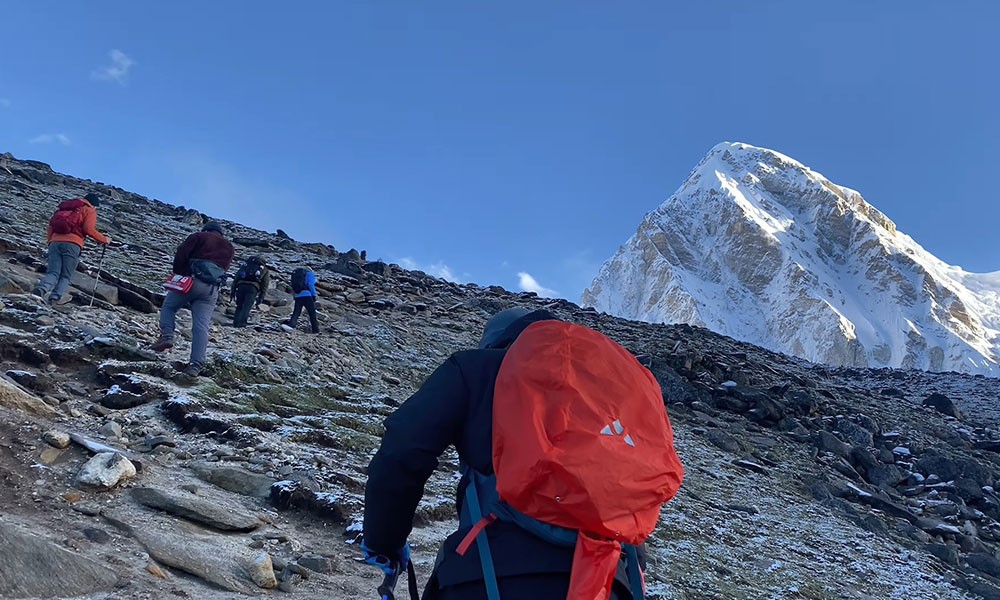
Despite its location, which is closer to the wilderness than other mainstream trekking regions in the country, high altitude points, and long trekking distance, the Everest Base Camp Trek is still considered a moderate trekking adventure to the Himalayas. As the trekking packages are designed with enough acclimatization period to let the trekkers adapt to new altitudes before pushing further, and the distance to be covered during a single day is planned strategically, the journey isn’t as physically challenging as many would expect.
With proper rest along the route and enough preparation, even beginner trekkers can easily complete this exciting base camp journey. There aren’t any physically strenuous or technical sections along the way; every part of the route is just a straightforward walk. Having said that, the Everest Base Camp Trek is not like a walk in the park either. You will have to be mindful of the several challenging aspects of this wonderful adventure so that you can truly relish it.
First of all, you have to be on the lookout for the altitude gain part of this high-altitude trek, as it is directly related to altitude sickness. Kathmandu is at an elevation of 1,400 meters (4,593 feet), and your flight will take you to Lukla, which is 2,800 meters (9,186 feet) high from the sea level. You won’t feel much of an altitude in this region; however, after crossing Namche Bazaar at an elevation of 3,440 meters (11,286 feet), there are risks of altitude sickness if you don’t acclimatize properly.
Similarly, the overall walking distance can also be an exhausting journey if you haven’t made enough physical prepartion. The total trekking distance in this trek, two way, Lukla- Everest Base Camp is around 130 km (80 miles); thus, the average walking distance during each trekking day comes down to 6 to 7 hours on average. So, you need to consider these factors to prepare adequately and select the right package for an unforgettable experience.
Read also:Everest Base Camp Trek Difficulty
Training and Preparation
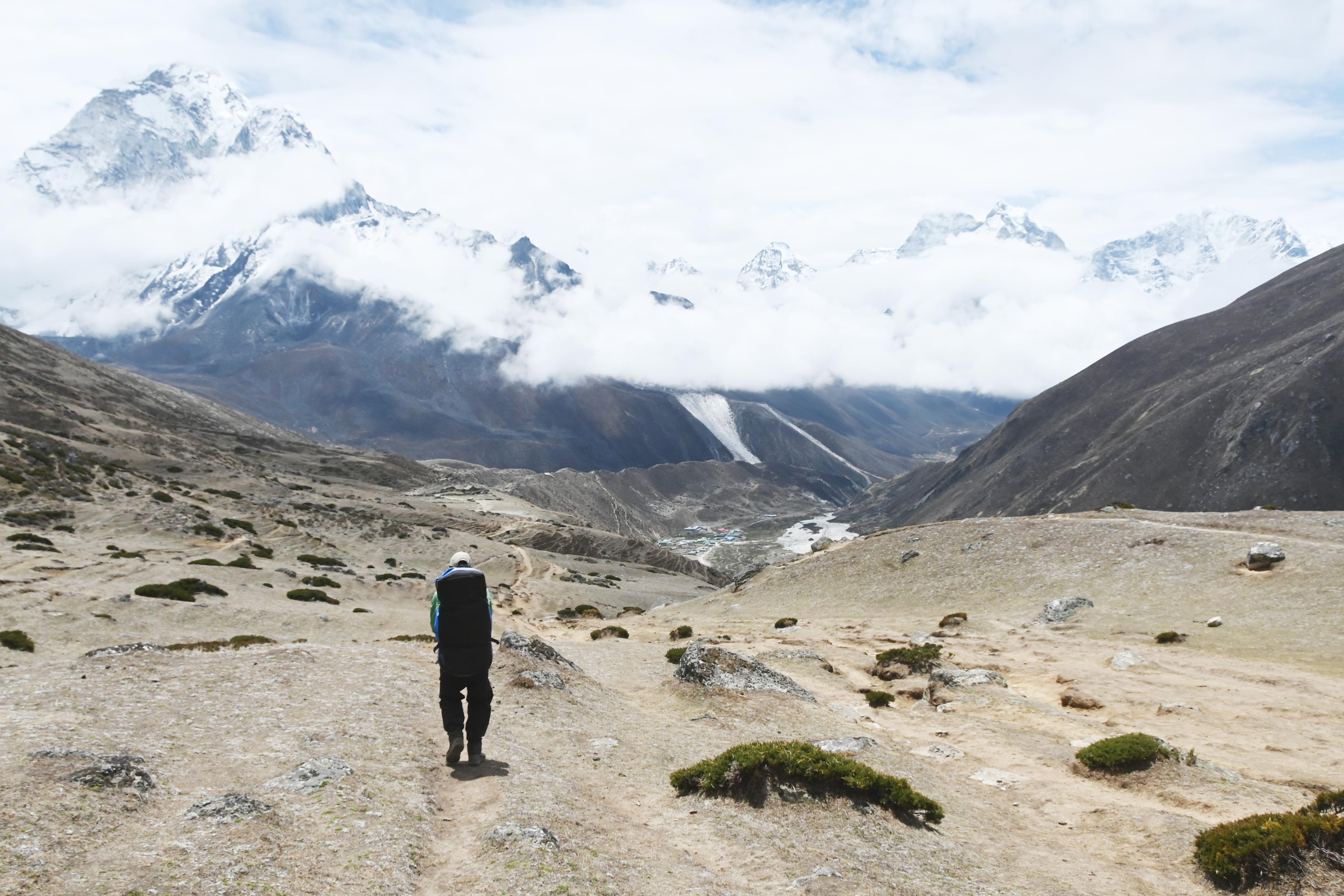
The ease and comfort level you will feel during your Everest Base Camp Trek in monsoon season will entirely depend on the efforts you will put into your training. The general recommended training period for high-altitude treks in Nepal is about 3 to 6 weeks. You don’t have to dedicate long hours to the training, but you are still recommended to stay consistent with the training. The major focus of your training should be on strength and endurance development; however, cardiovascular and stamina training will also prepare your body for long hours of walking at rising altitudes.
To understand what kind of training you need to focus you can do a proper physical assessment or some practice hikes on nearby hills. As the physicality differs from person to person, this will give you an idea of what area you need to work on. Moreover, practice hikes also give you the opportunity to test your trekking equipment.
Strength and Endurance Training Exercises
- Squat
- Push Up
- Pull Up
- Hammer Curl
- Plank
- Bench Press
- Leg Extension
- Lunge
- Dumbell Row
- Calf Raise
- Weightlift
- Glute Bridge
- Leg Press
- Overhead Press
- Step Up
Stamina and Cardiovascular Exercises
- Jogging
- High Knees
- Mountain Climber
- Jumping Rope
- Swimming
- Dancing
- Kick Boxing
- Rowing
- Cycling
Read also: Do I Need Trekking Experience for Everest Base Camp Trek?
What Should You Pack for Everest Base Camp Trek in Monsoon Season?
.jpg)
Unlike the high seasons (i.e., autumn and spring), Everest Base Camp Trek in the monsoon season is a slightly demanding endeavor. As the weather conditions are not that stable and there can be continuous days of rainfall, packing appropriate rain gear is quite important. Similarly, the lower trekking trails are often muddy and slippery, so you will need ideal footwear with good traction so that you can properly move along the trekking trails.
Don’t worry; you won’t have to carry all of your luggage by yourself. Marvel Adventure will also provide a strong and helpful porter with proper equipment to assist you with your luggage. We will assign one porter for two of the trekkers; the porter will carry luggage worth 15kg for each trekker. Still, it will be sensible if you don’t go overboard with the packing and sort out the essentials efficiently.
Packing Recommendation for Head and Body
- Sun-brim hat
- Lightweight beanie and insulated hat
- Headscarf and neck scarf
- T-shirt (different layers)
- Lightweight cotton shirt
- Thermal vest
- Sweater or sweatshirt
- Fleece jacket
- Waterproof/windproof hooded jacket
- Insulated jacket
- Down jacket for alpine zones
- Waterproof hiking shorts
- Waterproof trousers
- Lightweight cotton pant
- Insulated warm trousers
- Comfortable inner-wears
Feet
- Lightweight sock
- Warm insulated sock
- Trekking boot with good traction and grip
- Sports shoes with good traction
- Sandals or crocks with good grip
- Waterproof gaiter
Personal Hygiene/Toiletries
- Toothbrush, toothpaste, and floss
- Biodegradable soap and shampoo
- Sunblock cream
- Lip care and moisturizer
- Face wash or cleanser
- Small mirror
- Nail clipper and shaving razor
- Travel towel
- Tissue paper and wet wipes
- Toilet paper
- Insect repellent
- Handwash or sanitizer
- Deodorant or cologne
- Foot powder
- Female hygiene products
- Personal medication
Trekking Equipment
- Trekking pole
- Sunglass (UGV protection)
- Sleeping bag
- Backpack with rain cover
- Duffle bag
- Rain cover for luggage, and you
- Headlamp
- Water filtration system
- Water bottle and thermos flask
- Map, compass, and GPS
- Multi-tool knife
- Power bank
- Repair kit
- Packing sack
- Binoculars and camera
- Guidebook
- First-aid kit
Required Permits
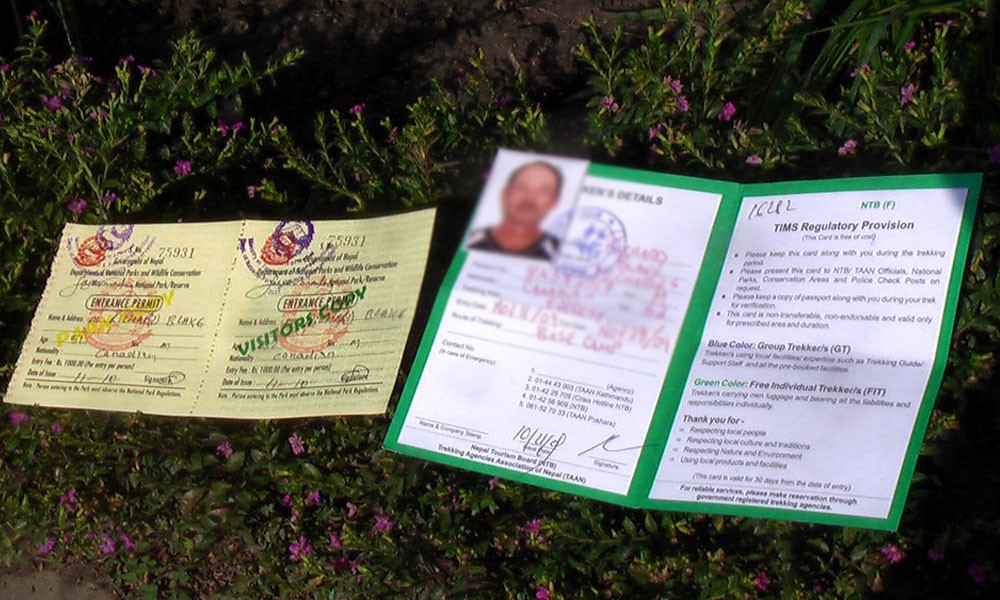
During your Everest Base Camp Trek in monsoon season, you will need to acquire two permits to traverse across the exciting mainstream trails. The Everest region houses the UNESCO World Heritage Site, Sagarmatha National Park and a restricted area that you will trek past during your trek. Thus, the following permits are mandatory during your exploration in the region.
Permits for Everest Base Camp Trek
- Khumbu Pasang Lhamu Rural Municipality Entry Permit
- Sagarmatha National Park Entry Permit
As your trekking route will take you across the restricted area, you will need to get a Khumbu Pasang Lhamu Rural Municipality Entry Permit, this permit costs approximately US$ 20 per person. Similarly, to enter Sagarmatha National Park from Monjo, you will need to get a national park permit, which costs about US$ 30. The Khumbu Pasang Lhamu Rural Municipality Entry Permit is only available in Lukla and Namche. But, the Sagarmatha National Park Entry Permit can be easily acquired at Kathmandu.
Note: Marvel Adventure will take care of all your permit needs and collect them on your behalf.
What Kind of Food and Accommodation Facilities Can You Expect?
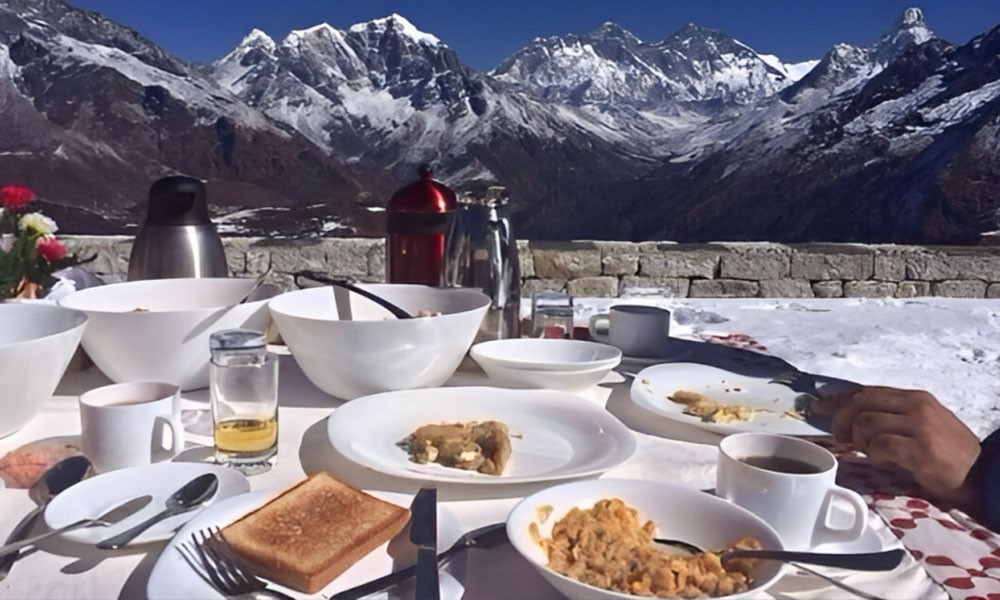
Despite the season of your visit, the Everest region is a mainstream trekking region in the country and the most popular base camp adventure in the world. So definitely, the services and amenities available in the region are more advanced than other remote trekking regions. But, don’t have high expectations; although it is a mainstream region, the Himalayan region in Nepal is a developed section of the country. Expecting amenities/services on the part with popular urban vacation destination in this Himalayan excursion would be folly.
Accommodation
Although monsoon is a low season, the teahouses/lodges are in operation; they are not shut down at high altitudes like in the winter season. So, during your Everest Base Camp Trek in monsoon, you will be able to enjoy the same level of amenities as any high season but under more serene settings as the crowd at the teahouses during this season is pretty low.
In your standard 12 Days Everest Base Camp Trek, you will spend 11 nights at the teahouses/lodges along the route. Your standard trekking package will get all the basic facilities, and the teahouses/lodges may also offer some amenities to thank you for visiting in this low-season. If you want to upgrade to a more luxurious mode of accommodation, the price is very reasonable in the monsoon season.
Whereas extended trek such as Everest Three High Pass Trek, your itinerary is extended and you will spend up to 15 days on Everest region.
Food
The food at the teahouses is pretty much the same during the Everest Base Camp Trek in monsoon season like any other season. The teahouses in this mainstream route serve trekkers with warm/tasty delicacies so the exploration moves further seamlessly. Even if the monsoon is the low season, there are still a lot of trekkers who prefer exploring the magnificence of the Everest region for a more serene experience. Thus, the teahouses don’t hold back when it comes to surprising the guest with their unique traditional culinary arts.
During your EBC Trek in monsoon season, you can expect a wide variety of traditional dishes as well as popular western delicacies on the menu of teahouses.
Menu For Breakfast: Tibetan Bread, Chapati, Tsampa Porridge, Tingmo, Buckwheat Bread, Sel Roti, Pancake, Muesli, Eggs, Toast, Butter, Jam, Honey, Oats, Cornflake, etc
Menu for Lunch and Dinner: Dal Bhat, Curry, Gundruk, Aloo Tama, Shyaphale, Thukpa, Dhindo, Soup, Steak, Fries, Burger, Sandwich, Pizza, Momo, Chowmein, Noodles, etc
Get Insights on:
Some Helpful Tips for Everest Base Camp Trek in Monsoon Season
- Pack necessary rain gear and waterproof layer
- Don’t forget to bring an umbrella and rain cover
- Be careful with your footing and follow the lead of your guide and porter
- Don’t rush with your trek, and take it slow
- Pay close attention to altitude sickness related symtoms
- Even if the atmosphere is refreshing, don’t forget to keep yourself hydrated and eat a balanced diet
- Avoid drinking alcohol and drinking cigarettes during your trek
- Be respectful of local culture, traditions, and norms
- Follow the suggestions and instructions of the guide
- Communicate effectively if you are facing any kind of issues
- Stay composed, flexible and enjoy the exploration
.jpg)


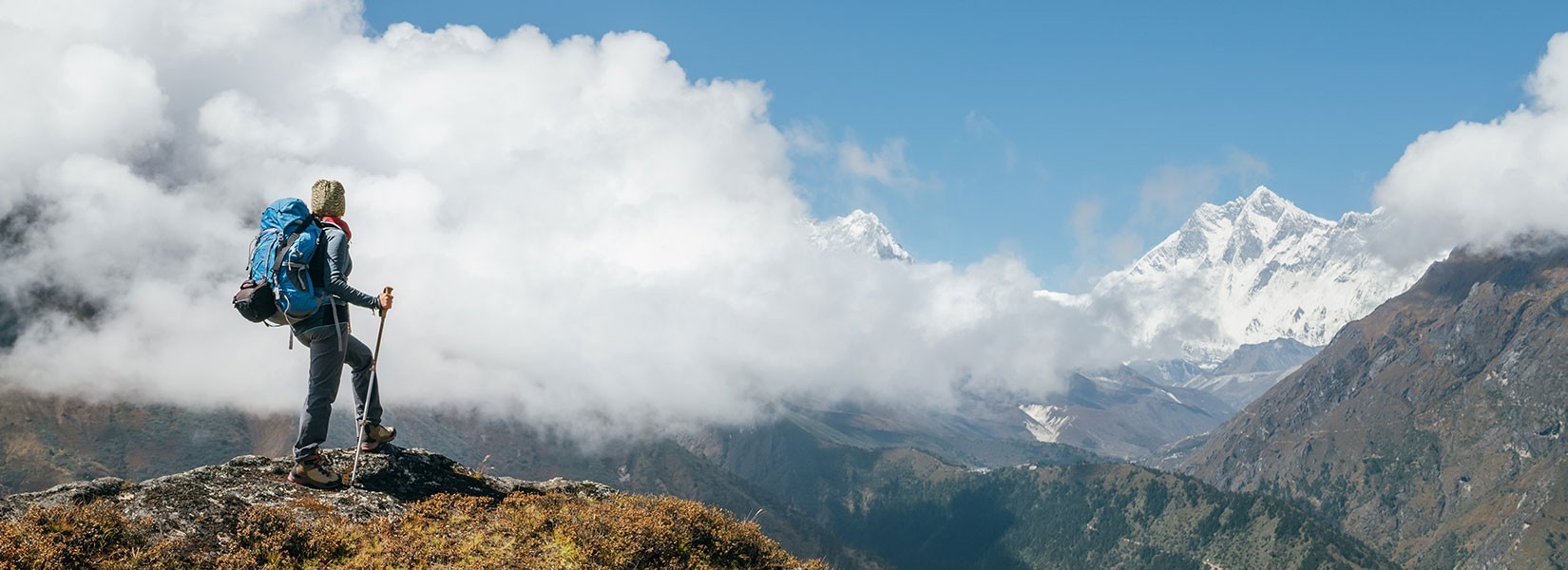




.jpg)


